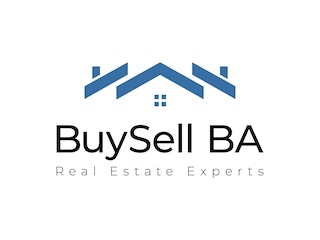BuySellBA
Administrator
Rising values in the interior: why La Plata beats other large cities - Ambito Financiero

Source:
August 11, 2025
By Jose Luis Cieri
A private report revealed that the "City of the Diagonals" leads the year-over-year increase in apartment prices. Mortgage lending influences demand and transactions.

Rodrigo Passage area. Near the Estudiantres de La Plata stadium, a spot now known as La Plata SoHo, home buying and selling operations also became more active there.
During the first half of 2025, the real estate market in major cities in the Argentine interior saw a significant increase in sales prices for used apartments. According to the Real Estate Report, La Plata led the way with a 20.5% year-over-year increase in the real value per square meter, followed by Mar del Plata (+15.3%), Rosario (+13.1%), and Córdoba city (+9.2%).
The study, conducted in conjunction with the Universidad del CEMA (UCEMA) and based on actual transaction data from the Re/Max network, confirmed that real prices—that is, closing values—rose steadily in all the markets analyzed. The boost came from both local activity and the emerging impact of mortgage lending, which began to reactivate previously underserved demand.
In comparative terms, the average price per square meter in these cities is still below the levels recorded in Buenos Aires, where it reached US$2,141/m2 in June . La Plata, which showed the greatest recovery in the semester, remains 35.1% below CABA . Rosario shows a difference of 33.2%, Mar del Plata 30.2%, and Córdoba 45.6%.
In that city, the combination of more affordable prices than in Buenos Aires, high university density, and expanding credit is beginning to be reflected in the statistics. This dynamism is also evident in the level of real estate activity, with a large portion of the supply concentrated in one - and two-bedroom units, typologies that appeal to both end buyers and investors.

Mar del Plata recorded a 15.3% year-on-year increase in the real value of m2, the second highest among major inland cities.
"The gap with Buenos Aires City remains very wide. Currently, the market value in the city is US$1,670 per square meter, well above that of Córdoba and La Plata," explained Gómez Picasso.
Credit appears as a new element on the scene, capable of motivating decisions that were previously on hold. The possibility of financing part of a purchase, in a context of prices still lagging behind historical highs, creates favorable conditions for the middle class.
"The possibility of accessing a first home, a second home, or a renovation through credit influences the purchase decision. There's also a context of flat prices in the used market, which creates favorable conditions for moving forward," explained Líbera.
According to data managed by the entity, the majority of transactions are concentrated in units between $35,000 and $75,000 , although in some areas there is also movement towards higher-value properties. He explained: "There is a segment of demand that is beginning to position itself for higher-end properties, especially in established areas."

Image of the General Paz neighborhood in Docta: in Córdoba capital, the real price per square meter grew by 9.2% in one year, although it remains 45.6% below the CABA average.
“The rate of mortgage issuance in the province of Buenos Aires, where La Plata and Mar del Plata are important due to the number of transactions they accumulate, has exceeded the total for all of 2024 in each of the last four months. Last year, the average was 278 mortgages per month; now, we're close to 1,700 per month,” explained Álvarez Garmendia.
The comparison illustrates the change in the cycle and puts into perspective the reappearance of a key financial instrument for market recovery.
For now, the data is clear: with nearly 60,000 transactions accumulated in six months , the province of Buenos Aires is one of the main centers of reactivation in the Argentine market. On that map, La Plata stands out as the most representative case in the urban interior, both for its price performance and its volume of activity.
Prices are rising, but without displacing demand. Credit volume is increasing, although it has not yet reached all sectors. "Supply is beginning to tighten, with new construction underway. The combination of these factors puts the interior in a new scenario: active, growing, and with the potential to consolidate a sustained recovery," concluded Álvarez Garmendia.
www,buysellba.com

Source:
August 11, 2025
By Jose Luis Cieri
A private report revealed that the "City of the Diagonals" leads the year-over-year increase in apartment prices. Mortgage lending influences demand and transactions.

Rodrigo Passage area. Near the Estudiantres de La Plata stadium, a spot now known as La Plata SoHo, home buying and selling operations also became more active there.
During the first half of 2025, the real estate market in major cities in the Argentine interior saw a significant increase in sales prices for used apartments. According to the Real Estate Report, La Plata led the way with a 20.5% year-over-year increase in the real value per square meter, followed by Mar del Plata (+15.3%), Rosario (+13.1%), and Córdoba city (+9.2%).
The study, conducted in conjunction with the Universidad del CEMA (UCEMA) and based on actual transaction data from the Re/Max network, confirmed that real prices—that is, closing values—rose steadily in all the markets analyzed. The boost came from both local activity and the emerging impact of mortgage lending, which began to reactivate previously underserved demand.
In comparative terms, the average price per square meter in these cities is still below the levels recorded in Buenos Aires, where it reached US$2,141/m2 in June . La Plata, which showed the greatest recovery in the semester, remains 35.1% below CABA . Rosario shows a difference of 33.2%, Mar del Plata 30.2%, and Córdoba 45.6%.
What drives La Plata
According to Germán Gómez Picasso of Reporte Inmobiliario, values are rising across the country, partly due to the low starting point left by years of decline and partly due to the revival of demand. “La Plata specifically is a very thriving market. It's a district with a large population and a very dynamic movement linked to student migration. This is confirmed by the large number of buildings under development,” he noted.In that city, the combination of more affordable prices than in Buenos Aires, high university density, and expanding credit is beginning to be reflected in the statistics. This dynamism is also evident in the level of real estate activity, with a large portion of the supply concentrated in one - and two-bedroom units, typologies that appeal to both end buyers and investors.

Mar del Plata recorded a 15.3% year-on-year increase in the real value of m2, the second highest among major inland cities.
"The gap with Buenos Aires City remains very wide. Currently, the market value in the city is US$1,670 per square meter, well above that of Córdoba and La Plata," explained Gómez Picasso.
Quotes
According to data from interior portals, the average prices for three-room apartments are as follows:- Mar del Plata: US$130,000.
- Rosario: US$125,000.
- Córdoba Capital: US$128,000.
- La Plata: US$132,000.
A rebound that does not slow down demand
Despite the increases, interest in purchasing used homes in these cities remains strong. Gómez Picasso emphasized that the majority of buyers in these markets remain local. "The rise in prices is not affecting demand for now, which remains active primarily due to the support of mortgage lending, which is generating new demand. Prices will surely continue on this path of moderate increases, as we have been seeing," he analyzed.Credit appears as a new element on the scene, capable of motivating decisions that were previously on hold. The possibility of financing part of a purchase, in a context of prices still lagging behind historical highs, creates favorable conditions for the middle class.
More reasons behind the growth
Mirta Líbera , president of the Real Estate Chamber of the Province of Buenos Aires (CIBA), stated that "an upward trend continues, with figures that are among the highest in several years." The leader agreed that mortgage lending , although not yet widespread, has begun to have a dynamic effect."The possibility of accessing a first home, a second home, or a renovation through credit influences the purchase decision. There's also a context of flat prices in the used market, which creates favorable conditions for moving forward," explained Líbera.
According to data managed by the entity, the majority of transactions are concentrated in units between $35,000 and $75,000 , although in some areas there is also movement towards higher-value properties. He explained: "There is a segment of demand that is beginning to position itself for higher-end properties, especially in established areas."
More credit, more operations
Laura Álvarez Garmendia , a provincial real estate analyst, added a perspective on the provincial context. "Not only is there a monthly increase, but the year-over-year increase shows a jump of almost 50% compared to the same period last year," she stated. For her, credit is the factor that makes the difference.
Image of the General Paz neighborhood in Docta: in Córdoba capital, the real price per square meter grew by 9.2% in one year, although it remains 45.6% below the CABA average.
“The rate of mortgage issuance in the province of Buenos Aires, where La Plata and Mar del Plata are important due to the number of transactions they accumulate, has exceeded the total for all of 2024 in each of the last four months. Last year, the average was 278 mortgages per month; now, we're close to 1,700 per month,” explained Álvarez Garmendia.
The comparison illustrates the change in the cycle and puts into perspective the reappearance of a key financial instrument for market recovery.
Conditions that support the trend
Experts agree that the continuation of this recovery will depend on the macroeconomic context. Price stability, credit consolidation, and improved predictability are necessary conditions to sustain the rebound.For now, the data is clear: with nearly 60,000 transactions accumulated in six months , the province of Buenos Aires is one of the main centers of reactivation in the Argentine market. On that map, La Plata stands out as the most representative case in the urban interior, both for its price performance and its volume of activity.
Prices are rising, but without displacing demand. Credit volume is increasing, although it has not yet reached all sectors. "Supply is beginning to tighten, with new construction underway. The combination of these factors puts the interior in a new scenario: active, growing, and with the potential to consolidate a sustained recovery," concluded Álvarez Garmendia.
www,buysellba.com

